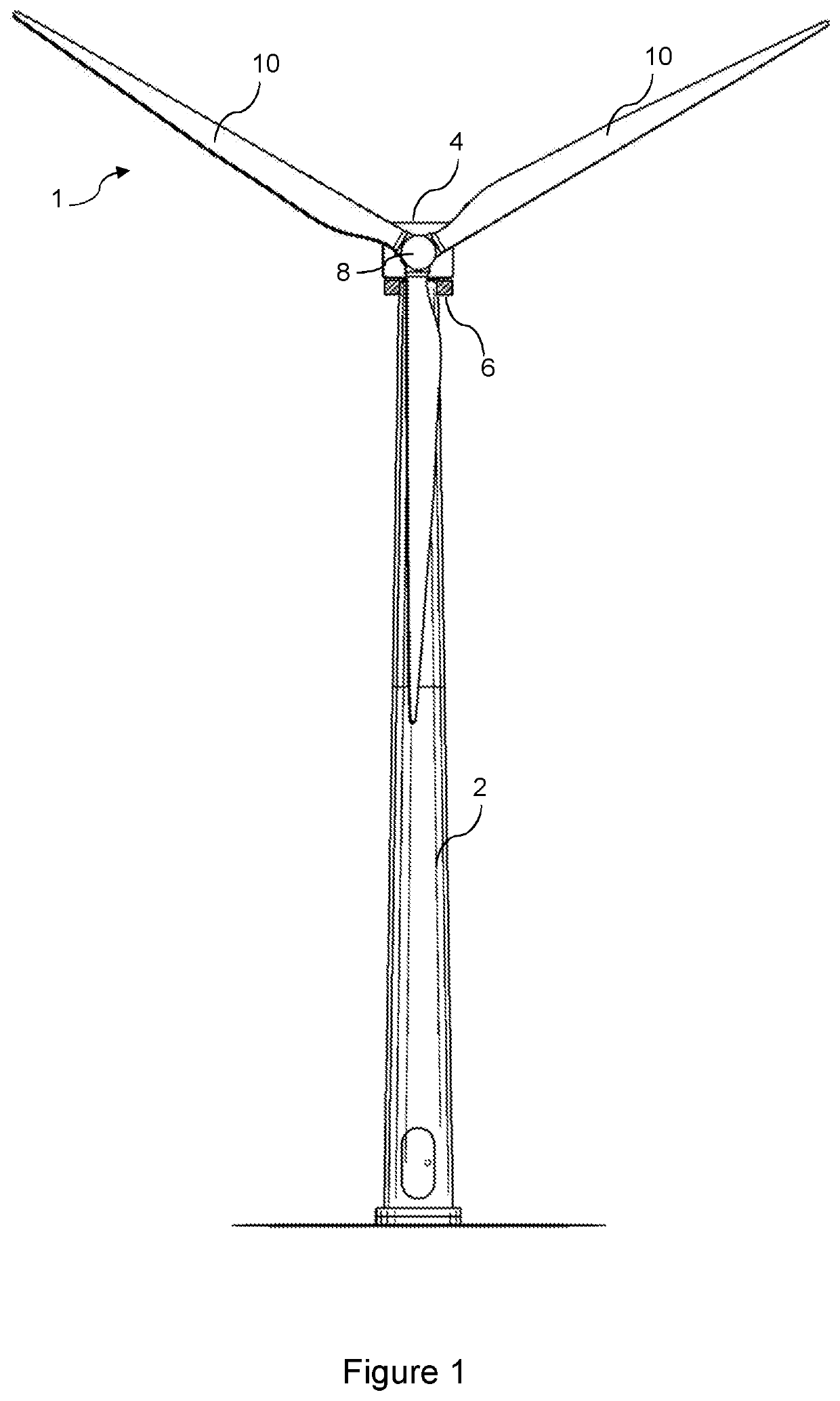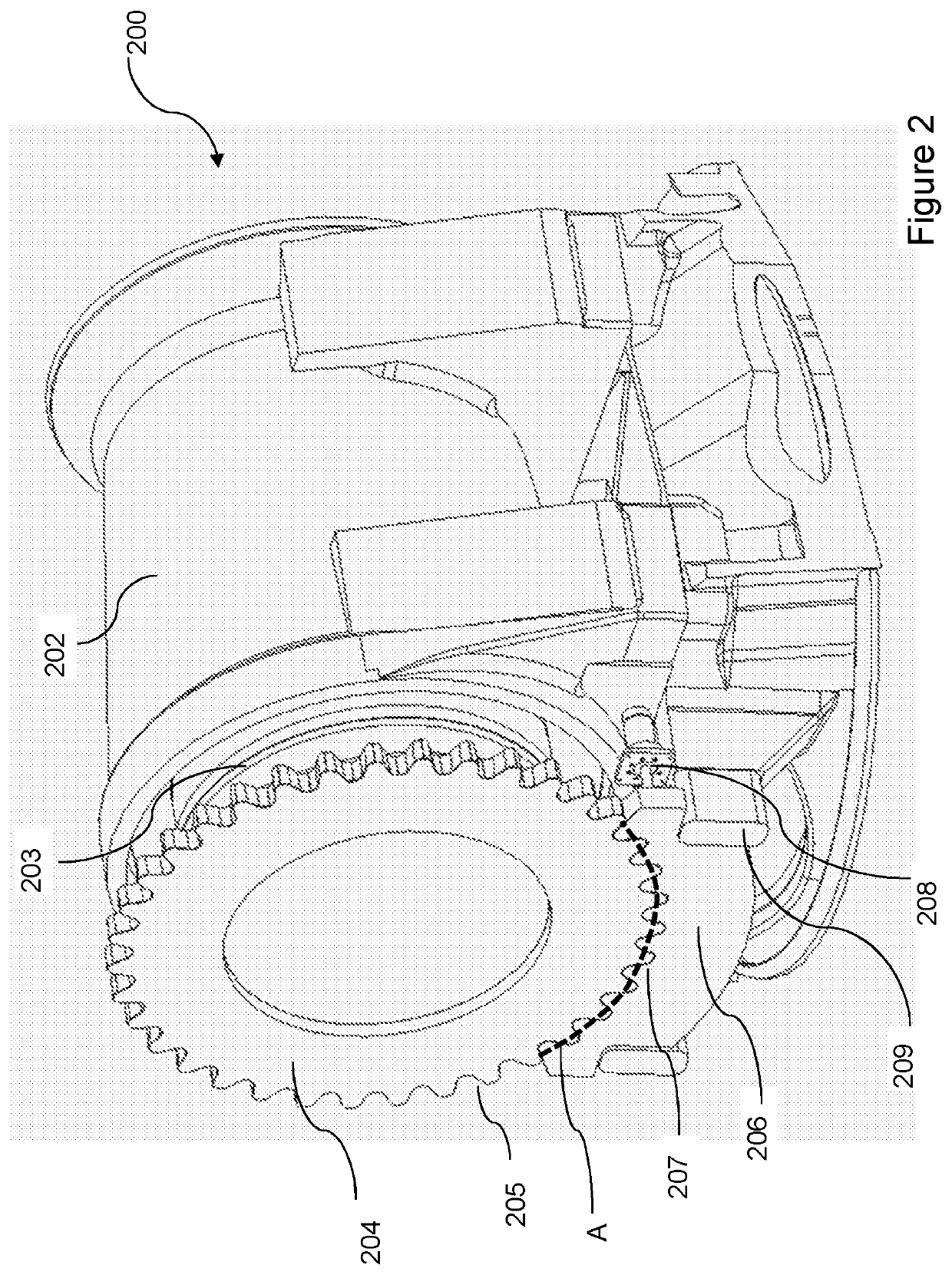Rotor restraining apparatus and method for wind turbines
a technology of restraining apparatus and wind turbine, which is applied in mechanical equipment, machines/engines, and final product manufacture, etc., can solve the problems of increased space in the housing, inconvenient locking pin arrangement, and relatively insecureness
- Summary
- Abstract
- Description
- Claims
- Application Information
AI Technical Summary
Benefits of technology
Problems solved by technology
Method used
Image
Examples
Embodiment Construction
[0032]Referring to FIG. 1, a wind turbine 1 according to an embodiment of the invention comprises a tower 2, a nacelle 4 rotatably coupled to the top of the tower 2 by a yaw system 6, a rotating hub 8 mounted to the nacelle 4 and a plurality of wind turbine rotor blades 10 coupled to the hub 8. The nacelle 4 and rotor blades 10 are turned and directed into the wind direction by the yaw system 6. The nacelle 4 may house generating components of the wind turbine, including the generator, gearbox, drive train and brake assembly, as well as convertor equipment for converting the mechanical energy of the wind into electrical energy for provision to the grid. It may be noted that “direct drive” wind turbines that do not use gearboxes are also known; a gearbox may therefore be optional.
[0033]The nacelle 4 also necessarily contains a main shaft housing (not shown in FIG. 1), which houses a main rotor shaft that is connected at a forward end to the hub 8 and rotor blades 10, and at a rear en...
PUM
 Login to View More
Login to View More Abstract
Description
Claims
Application Information
 Login to View More
Login to View More - R&D
- Intellectual Property
- Life Sciences
- Materials
- Tech Scout
- Unparalleled Data Quality
- Higher Quality Content
- 60% Fewer Hallucinations
Browse by: Latest US Patents, China's latest patents, Technical Efficacy Thesaurus, Application Domain, Technology Topic, Popular Technical Reports.
© 2025 PatSnap. All rights reserved.Legal|Privacy policy|Modern Slavery Act Transparency Statement|Sitemap|About US| Contact US: help@patsnap.com



